
This story was originally published by EdSource. Sign up for their daily newsletter.
On a recent morning, nearly 100 children clapped, sang, and danced in a large circle filling the cafeteria at Nystrom Elementary School in Richmond as part of a joyous Harambee celebration, the Swahili word for “all pull together.”
The students, ranging in age from 4 to 11, were participating in the daily opening ceremony of the CDF Freedom School. The no-cost summer program focused on intensive reading and vocabulary building; after-school offerings that ranged from skateboarding and robotics to mural painting and African dance.
The CDF Freedom School is one of nearly a dozen summer programs offered by the West Contra Costa Unified School District. Most of the programs are in partnership with a range of nonprofit organizations; many are made possible by support from the $4 billion-a-year Expanded Learning Opportunities Program or ELOP, initiated by Gov. Gavin Newsom five years ago.
The initiative represents one of the largest investments in California education in decades — one that has received scant attention. It is based on research showing that high-quality summer learning can slow or eliminate the well-known “summer slide,” which contributes to maintaining or even widening the achievement gap.
The initiative has allowed districts serving large numbers of low-income students, like West Contra Costa Unified, where Richmond is located, and others around the state, such as the Compton Unified School District in Los Angeles County, to launch an array of what are called summer “enrichment” programs.
These programs go beyond traditional summer remedial or developmental classes and “credit recovery” courses for high school students at risk of not graduating. Instead, they are designed to foster creativity, critical thinking and a love of learning in a fun and supportive environment.
The multibillion-dollar initiative makes it possible to offer after-school and summer programs “on a scale not seen in any other state,” said Linda Darling-Hammond, an education professor emeritus at Stanford University and president of the California State Board of Education. “While we are still growing the capacity of the program to meet the demand, it has been a game-changer in many districts.”

Zara Phillips, an instructor at the CDF Freedom School in Richmond, reads to a group of students from a book titled “March,” co-authored by the late civil rights leader John Lewis. Credit: Louis Freedberg / EdSource
Over the past five years, the state has spent nearly $14 billion on the initiative, which must be spent only on children from transitional kindergarten through the sixth grade.
By the end of the current fiscal year, the state will have spent over $18 billion on the program. That’s because Newsom convinced the Legislature to increase the funding by an additional half billion dollars (to $4.5 billion) this year so that more of the state’s children can participate.
Because no research component was built into the initiative, it is impossible to know whether it is having the statewide impact that legislators hoped for.
That is why the best — and perhaps only — way to gauge its impact is to look at districts like West Contra Costa Unified, where educators say the infusion of expanded learning dollars has had a huge impact on their summer offerings.
Funds allowed West Contra Costa to grow to nine enrichment programs
Last year, West Contra Costa Unified, with a student enrollment of just under 30,000 students, received $18.5 million in funds from the initiative. Of that, it spent two-thirds on after-school and other activities during the regular school year. The rest went into its expanded summer offerings.
Martine Black, the district’s director of family and community engagement, recalls that before the initiative got underway, the district only offered two summer enrichment programs.
Now, she says, there are at least nine such programs. “ELOP has vastly enhanced our ability to ensure that more students, particularly underserved students, have access to expanded learning,” she said.
Gabriel Chilcott, the district’s director of curriculum, instruction and assessment, says the funds the district receives “definitely fill in a gap that enables us to get kids into fantastic programming.”
In addition to the CDF Freedom School, the district contracts with nonprofit organizations such as the Headwaters Science Institute, which teaches scientific methods to children as young as 4 in outdoor settings. Aim High, serving sixth to ninth graders, teaches science through hands-on projects. Its Issues and Choices curriculum helps sixth graders tackle questions like “How do I utilize my strengths to transition to middle school successfully?” The nonprofit Love. Learn. Success. offers Mandarin language instruction, among many other activities at different school sites.

A staffer with the Rotary Nature Center at Lake Merritt in Oakland describes birds that students might see in the area. Credit: Louis Freedberg / EdSource
This summer, nearly 1,300 students enrolled in enrichment programs, at least partially supported by Expanded Learning funds. That’s still a relatively small percentage of the district’s 10,000 or more TK-6th-grade low-income and other high-need students. But it is a far larger number than it could serve in the past, and Chilcott says the district is “relatively close to achieving that sweet spot of matching interest with the need.”
Shakira Reynolds, the dynamic director of the Richmond Freedom School, which belongs to a nationwide network of programs founded by the Children’s Defense Fund, is particularly proud that many of her summer enrollees are in special education programs during the year, and several of them are on the autism spectrum. The Freedom School offers a rare opportunity for many of them to spend time with peers without disabilities in a relaxed, non-stressful environment.
Reinforcing curriculum while strengthening social-emotional skills
After the opening Harambee ceremony, students — or scholars, as Reynolds calls them — break into groups of eight to 10 students, where they read about Black history and civil rights. Each class is led by a college student or recent graduate who is often considering becoming a teacher. They’re assisted by high school students from district schools who are paid interns.
Nomi Harris, 12, who lives in Richmond, has attended the Freedom School for five consecutive summers. She says she likes the “positivity” of the program, especially the opening celebration, and the “comforting” environment it offers.
Nomi said the program offers a welcome opportunity to be around other Black children, who make up the majority of the summer school’s enrollment. Richmond was a majority Black city as recently as the 1980s.
Fifth grader Mack Dixon, 10, especially likes the wide range of after-school activities, which he wouldn’t usually have access to.
Last summer, his parents gave him math exercises to do — math is his favorite subject, he says — and books to read, while bugging him to get off video games like Fortnite or Call of Duty, which do nothing for his mood. “I just lose my temper,” he said.
Asked what the favorite parts of the program are, he says, “Everything. I like all of it.”
Across town, about 100 students enrolled in the Headwaters Science Institute start their day at Riverside Elementary School.
On a recent morning, they headed out in yellow school buses to the botanical garden on the banks of Lake Merritt, an Oakland landmark. There, they broke into small groups to carry out a range of scientific “experiments” or to find answers to questions students themselves have chosen.
On this day, the younger children tackled questions like, “Are there more birds in the tree or on the ground? and “Are there more plants in wet soil or dry soil?” They gathered “data” from observations, which older students and staff helped record for them.
Their findings: There are more birds in the trees (in part, they explain, because they may have scared birds on the ground away) and more plants in wet soil, despite the drought-resistant emphasis in the gardens.
Megan Seifert, the Headwaters program’s director and founder who has a Ph.D. in zoology, is enthusiastic about her partnership with the district, where officials were looking “for a lot more than child care … our goals really aligned with the district’s,” she said.
Ylan Hunt, whose 6-year-old son, Miles, is in the program, says a similar one in San Ramon, a much more affluent community a half hour away, would cost at least $800. “This is absolutely needed for our children,” she said. That includes children with special needs who might not be able to get into other programs. “There are no exclusionary criteria,” she said.
As for her son, “he loves school anyway, but if he can get a field trip two or three days a week, and he is outside, he is happy,” she says. And she recognizes the importance of introducing kids to science at a very early age.
The summer program, Seifert points out, reinforces the regular school curriculum and strengthens social-emotional skills that many educators now recognize as key to long-term success.
Seifert says students learn math skills like graphing in a way that is much more fun — and relevant — than in a regular classroom. “There’s no stress around it,” Seifert says. They also become more confident about public speaking through presenting their research findings to classmates and parents at the end of each week.
“We love it, the kids love it,” said Donavan Szarka, who has three children in the program.
Initially, he concedes, they didn’t want to be there at all. They asked him to pick them up as early as possible. After a few days, the message changed. “Leave us here longer,” they pleaded. “Let us stay later.”
Louis Freedberg is a veteran education journalist and served as EdSource executive director from July 2011-April 2021.

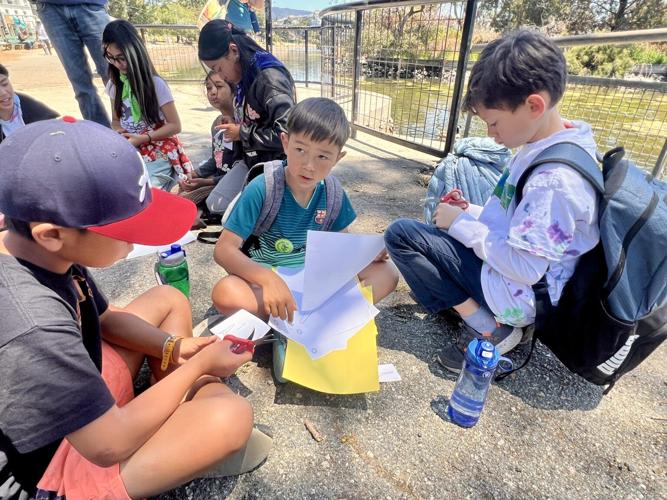
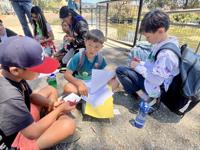

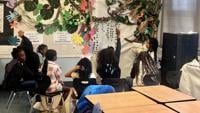

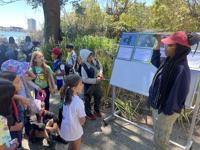

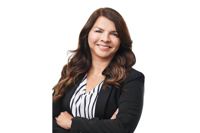

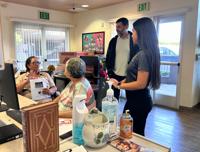

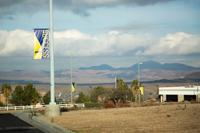


(0) comments
Welcome to the discussion.
Log In
Keep it Clean. Please avoid obscene, vulgar, lewd, racist or sexually-oriented language.
PLEASE TURN OFF YOUR CAPS LOCK.
Don't Threaten. Threats of harming another person will not be tolerated.
Be Truthful. Don't knowingly lie about anyone or anything.
Be Nice. No racism, sexism or any sort of -ism that is degrading to another person.
Be Proactive. Use the 'Report' link on each comment to let us know of abusive posts.
Share with Us. We'd love to hear eyewitness accounts, the history behind an article.